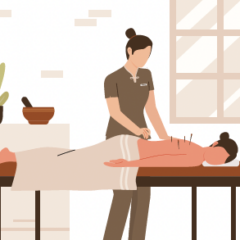Published on
Is Sitting the New Smoking?
You might have heard that “sitting is the new smoking,” a phrase intended to draw attention to the health risks of both sitting and smoking. By now, we all know that smoking is very bad for you, but not everyone may be aware of how dangerous sitting may be. Many health experts are hoping to change that.
Is sitting really as bad as smoking? How bad is sitting for your health? Perhaps more importantly, what can you do to reduce your risk?
THE HEALTH RISKS OF SITTING
For the purposes of this discussion, “sitting” doesn’t simply mean assuming a sitting position. Instead, we’re referring to sedentary behavior – long periods of time when you move minimally, or not at all. Many jobs, especially office jobs, involve sitting for most of the workday. Many people also spend most of their leisure time sitting while they watch TV, look at their phones, or read. (You might actually be lying down for some of that time, but it’s the inactivity that’s the important factor, not the sitting position itself.)
A 2018 study found that sitting for more than eight hours per day was associated with the following increases in risk:
- Type-2 diabetes
- Cancer
- Heart disease or stroke
- Depression
- Overall risk of death
HOW DOES SITTING CAUSE HARM?
Sitting raises the risk of clots in both the veins and the arteries. A clot in a vein usually occurs in the lower legs (known as deep vein thrombosis or DVT), but can travel to the lungs and cause a life-threatening pulmonary embolism (PE). A clot in an artery can block the blood flow to an organ, leading to very serious health issues like heart attack or a stroke.
When you’re sedentary, blood flow slows down. Blood tends to pool, especially in the veins, and veins rely on the movements of surrounding muscles to push blood through. Stagnant blood has a strong tendency to clot. The longer you spend without moving, the greater the chance that a clot will form.
Physical inactivity can also contribute to the buildup of fat deposits in the blood vessel walls. These fatty deposits can increase the risk of heart attack and stroke.
Weight gain may also help to explain the association between sitting and health risks, and some experts believe that this is the main driver of the link. People who are physically inactive have a much higher risk of being overweight or obese, which in turn raises the risk for several health problems. The accumulation of excess fat tissue, particularly in the organs, causes chronic inflammation throughout the body, raising the risk of cancer and other diseases.

COMPARING SMOKING WITH SITTING
It’s important to point out that while sitting and smoking are both risky for your health, smoking is significantly more dangerous. The dangers of smoking should not be minimized. Smoking dramatically increases your risk for both blood clots and many other serious health problems.
A 2018 paper looked at the risks of both smoking and sitting and found that sitting increases the risk of death by 22%, while smoking increases it by 180% – meaning that smoking nearly triples the risk of death. For heavy smokers (two packs a day), the risk of death is more than five times higher than for a nonsmoker.
The truth is that sitting and smoking are not equivalent behaviors – smoking is worse for your health, although sitting is bad too. If you smoke and are sedentary, quitting smoking may have greater benefits to your health – but becoming more physically active is also important, and the benefits of this should not be minimized.
That’s what the phrase “sitting is the new smoking” means. It aims to highlight a health threat that many people are unaware of, and to convince at least a few of them to sit less. The more movement you can build into your day, the lower your risk of health issues – including blood clots.
References
Annals of Internal Medicine: Sedentary Time and Its Association With Risk for Disease Incidence, Mortality, and Hospitalization in Adults
National Library of Medicine: Effects of compression stockings on lower-limb venous and arterial system responses to prolonged sitting: A randomized cross-over trial
*Originally published in The Beat — October 2022. Read the full newsletter here.



